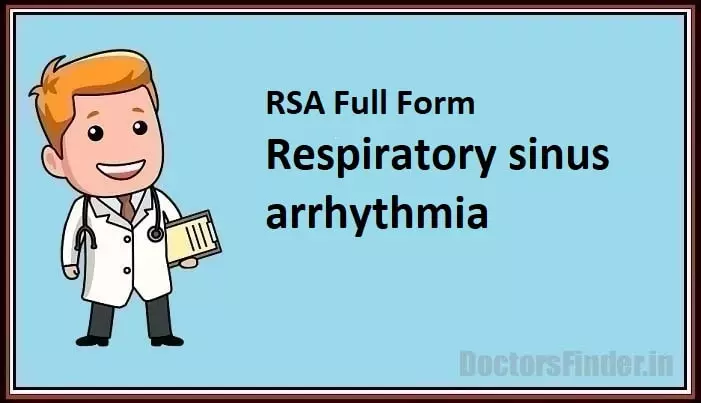The full form of RSA in medical term is “Respiratory sinus arrhythmia.”
Respiratory sinus arrhythmia (RSA) is a natural variation in heart rate during normal breathing. It is characterized by an increase in heart rate during inhalation and a decrease during exhalation. RSA is a common physiological phenomenon seen in healthy individuals of all ages.
RSA is mediated by the autonomic nervous system, specifically the parasympathetic nervous system. During inhalation, there is a decrease in parasympathetic activity increased heart rate. Conversely, during exhalation, there is an increase in parasympathetic activity, resulting in a decrease in heart rate. Several factors, including age, gender, body position, and activity level, influence the magnitude of the RSA.
RSA has been studied extensively and has been found to have several important physiological and clinical implications.

One potential clinical application of RSA is in diagnosing and treating certain medical conditions. For example, RSA is reduced in individuals with heart disease, diabetes, and other chronic illnesses. By monitoring RSA, healthcare providers can identify these conditions early and initiate appropriate interventions to improve outcomes.
Ongoing research into RSA is helping to improve our understanding of this important physiological phenomenon and its potential clinical applications.